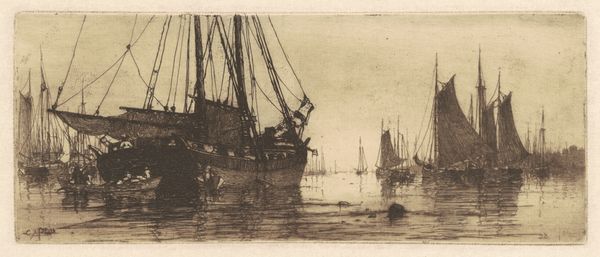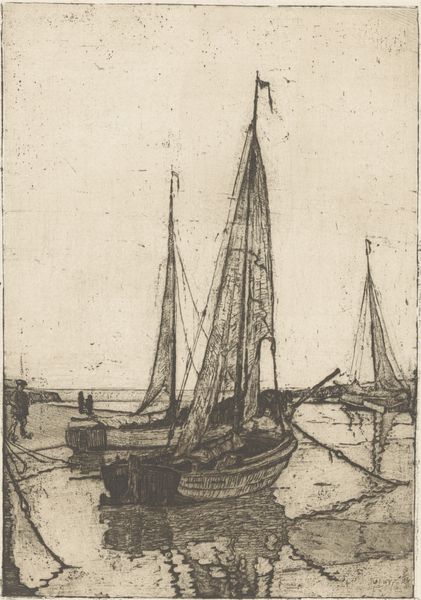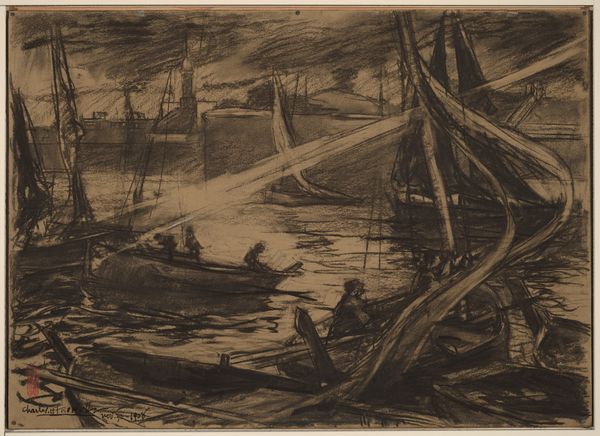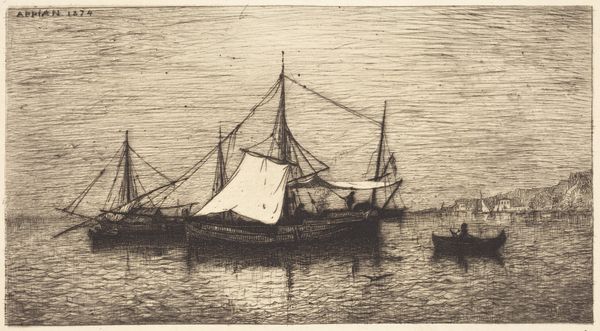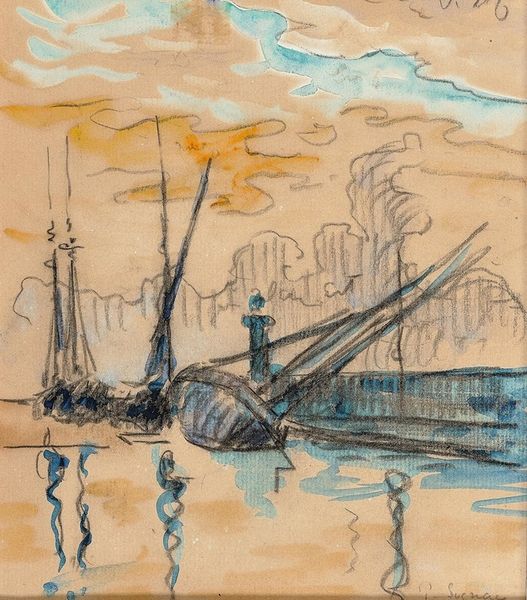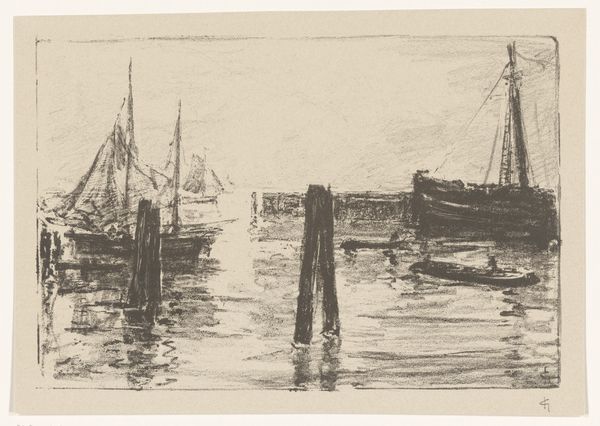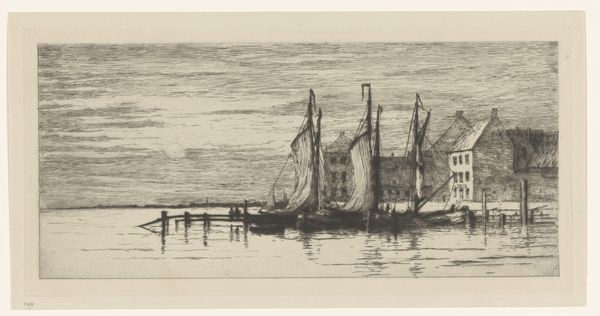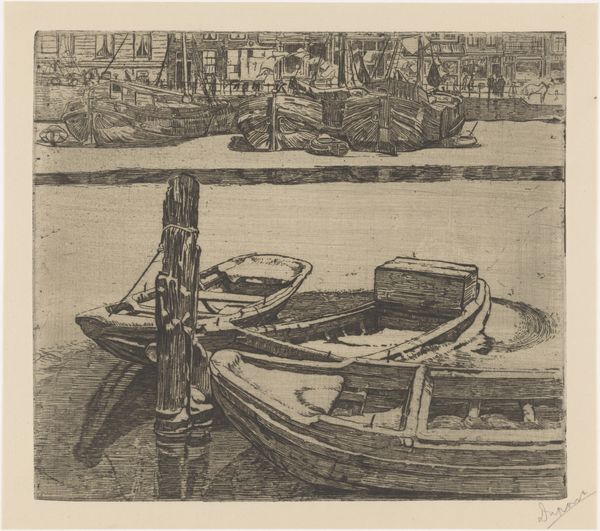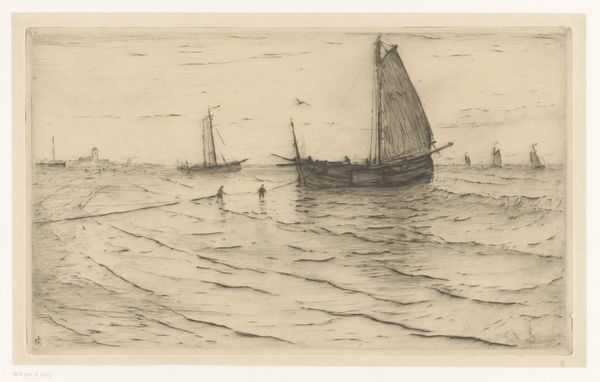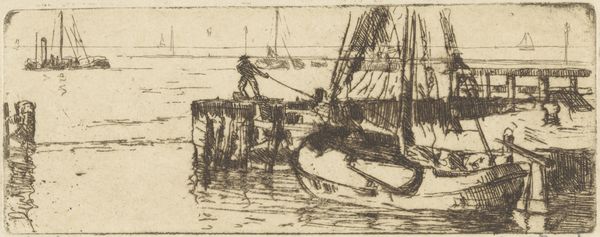
drawing, print, etching
#
drawing
# print
#
etching
#
landscape
Dimensions: sheet (trimmed to platemark): 24.45 × 19.69 cm (9 5/8 × 7 3/4 in.)
Copyright: National Gallery of Art: CC0 1.0
Editor: Here we have Julian Alden Weir’s "Boats at Peel—Isle of Man," an etching from 1889. There’s a stillness to this harbor scene, despite the network of masts and rigging. It's quite muted. What strikes you about it? Curator: It's the implied labor, or lack thereof, that I find compelling. The boats are idle, yes, but what about the lives dependent on them? Consider the late 19th century: how would the absence of these vessels affect the livelihood of those in Peel? Etchings, as accessible mediums, often served to document—sometimes even to critique—the social realities of a rapidly changing world. Does this stillness suggest economic stagnation, perhaps? Or a mandated pause? Editor: That's fascinating. I hadn’t considered that this "stillness" could signify more than just a quiet moment. It changes my understanding of the image. How did social changes impact art production during Weir's time? Curator: The rise of industrialization and its effect on traditional ways of life created deep anxieties and spurred artistic responses ranging from outright rejection to romanticized depictions of the past. Weir, part of the American Impressionist movement, engaged with these themes in subtle ways. One should also ask whether Weir actually portrayed working boats or whether they served mainly aesthetic interests to the artist and his targeted clientele. Where do these people come from? What part do they play? Do they have other skills besides navigating boats? Editor: So, by exploring the social context, we can see beyond the surface level of the landscape? Curator: Precisely! By questioning the narrative this seemingly peaceful scene presents, we engage with deeper questions about labor, class, and the artist’s own position within that society. I encourage viewers to really think critically about the story the artist tells in relation to those that go unspoken. Editor: Thank you. It is very useful to think of art's hidden narratives in relation to gender, social class, race, and power structures. This made me view art from a very different perspective.
Comments
No comments
Be the first to comment and join the conversation on the ultimate creative platform.

